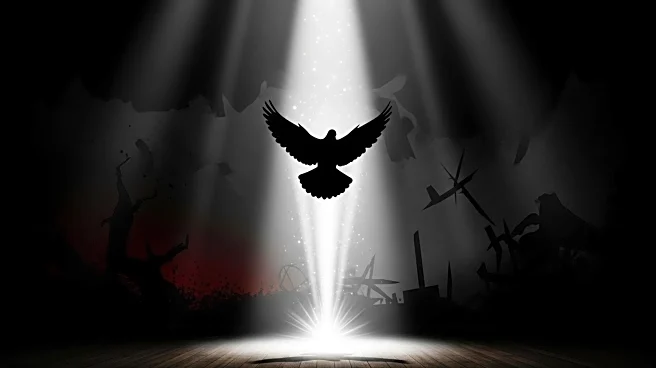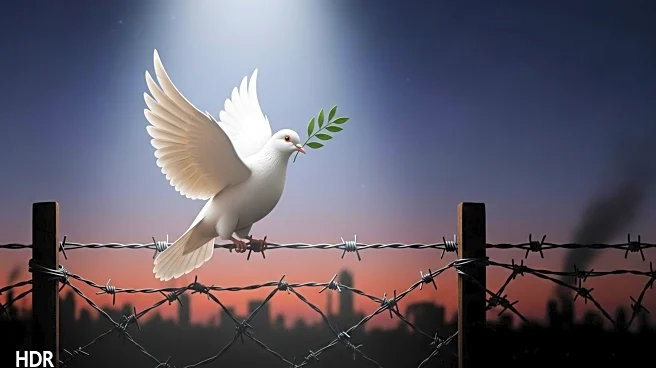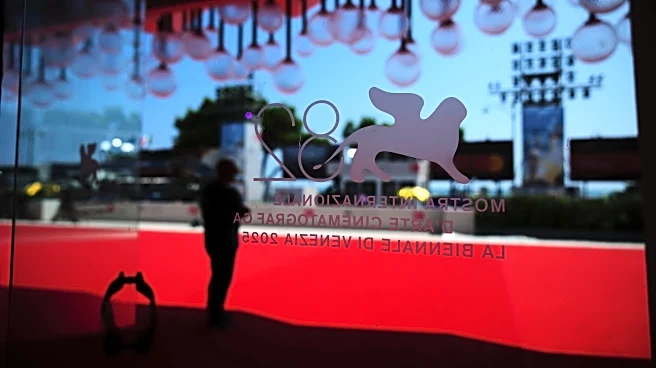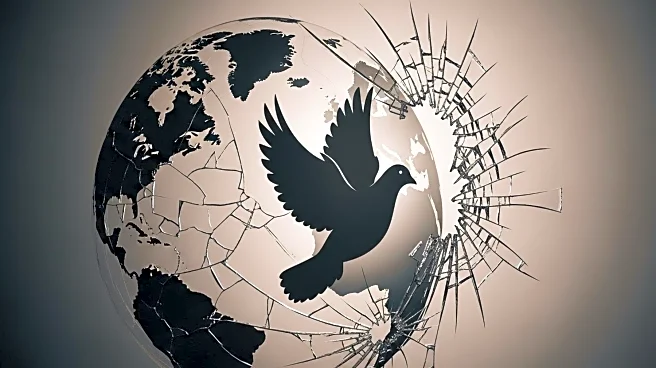What's Happening?
Tunisian filmmaker Kaouther Ben Hania has premiered her latest film, 'The Voice of Hind Rajab,' at the Venice Film Festival. The film is based on the tragic story of Hind Rajab, a 6-year-old girl who was killed in Gaza City in January 2024. The narrative unfolds entirely within the dispatch center of the Palestine Red Crescent Society rescue service, using real audio from Hind's distress call. The film portrays the urgent and emotional rescue mission, highlighting the bureaucratic challenges faced by first responders. Ben Hania was inspired to create the film after hearing the audio recordings, which had been widely shared on social media. The film features Palestinian actors and aims to convey the emotional impact of the conflict without showing graphic images.
Why It's Important?
The film sheds light on the ongoing Israel-Hamas conflict, which has resulted in significant loss of life and humanitarian challenges. By focusing on the personal story of Hind Rajab, the film brings attention to the human cost of the conflict and the struggles faced by civilians. It also highlights the role of media and storytelling in raising awareness and fostering empathy. The film's debut at a major international festival like Venice underscores its potential to reach a global audience and influence public perception of the conflict. Additionally, the involvement of high-profile executive producers such as Brad Pitt and Joaquin Phoenix may increase its visibility and impact.
What's Next?
The film is expected to be a strong contender in the upcoming awards season, with Tunisia selecting it as its candidate for the best international feature at the Oscars. While it does not yet have theatrical distribution in North America, Ben Hania hopes for widespread global viewership. The film's release may prompt further discussions and actions regarding the Gaza conflict, potentially influencing international policy and humanitarian efforts. The ongoing situation in Gaza continues to be a focal point at the Venice Film Festival, with protests and debates surrounding the conflict.
Beyond the Headlines
The film explores deeper ethical and cultural dimensions, such as the power of storytelling in conflict zones and the responsibility of filmmakers to portray sensitive subjects. It raises questions about the impact of media on public awareness and the potential for art to drive social change. The choice to focus on audio rather than graphic imagery challenges conventional approaches to depicting war and violence, offering a unique perspective on the emotional realities faced by those affected.












